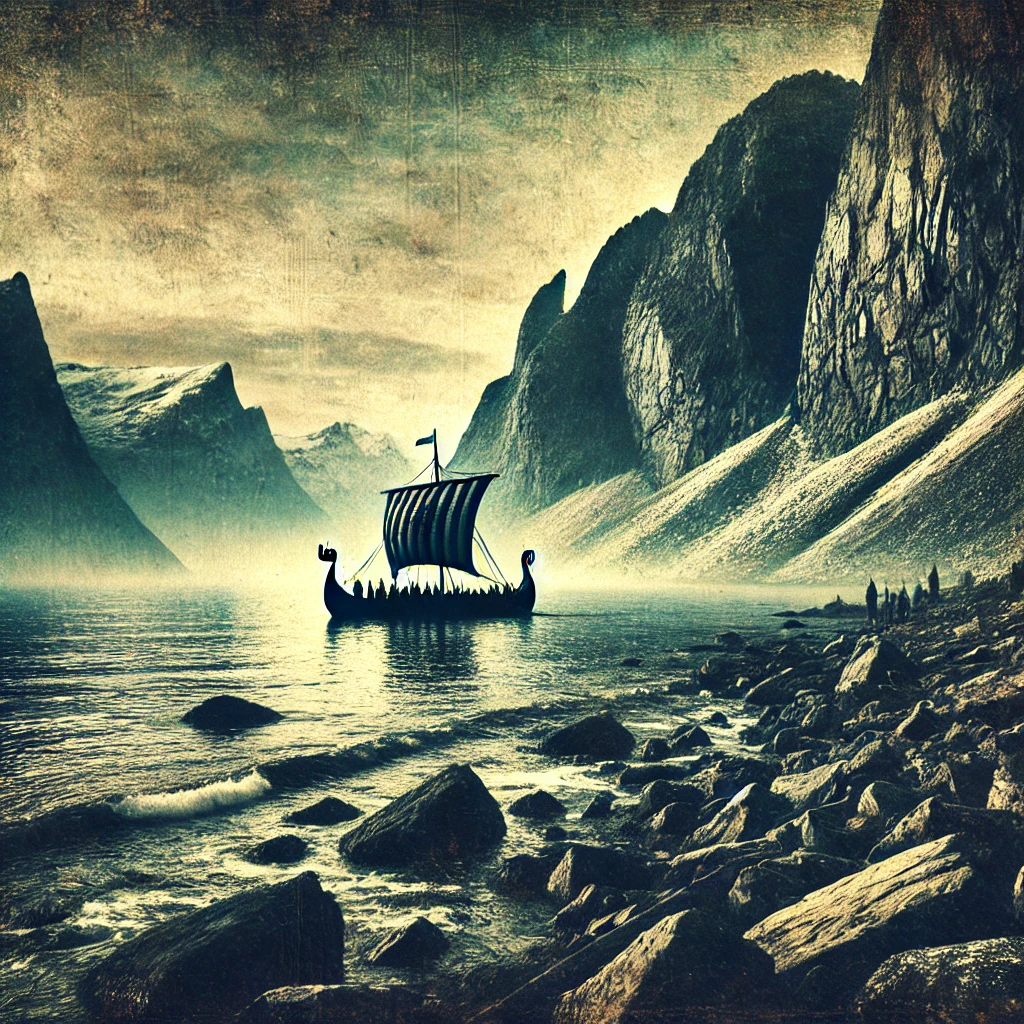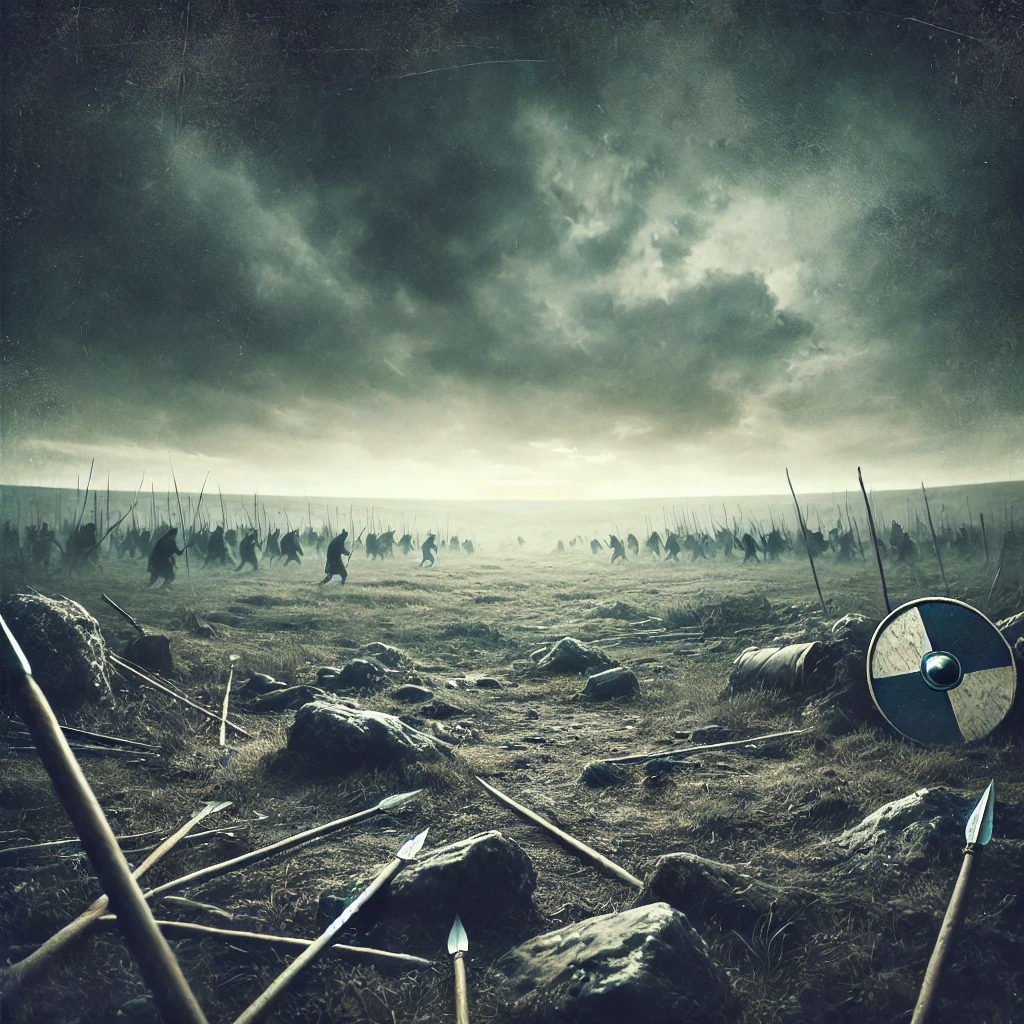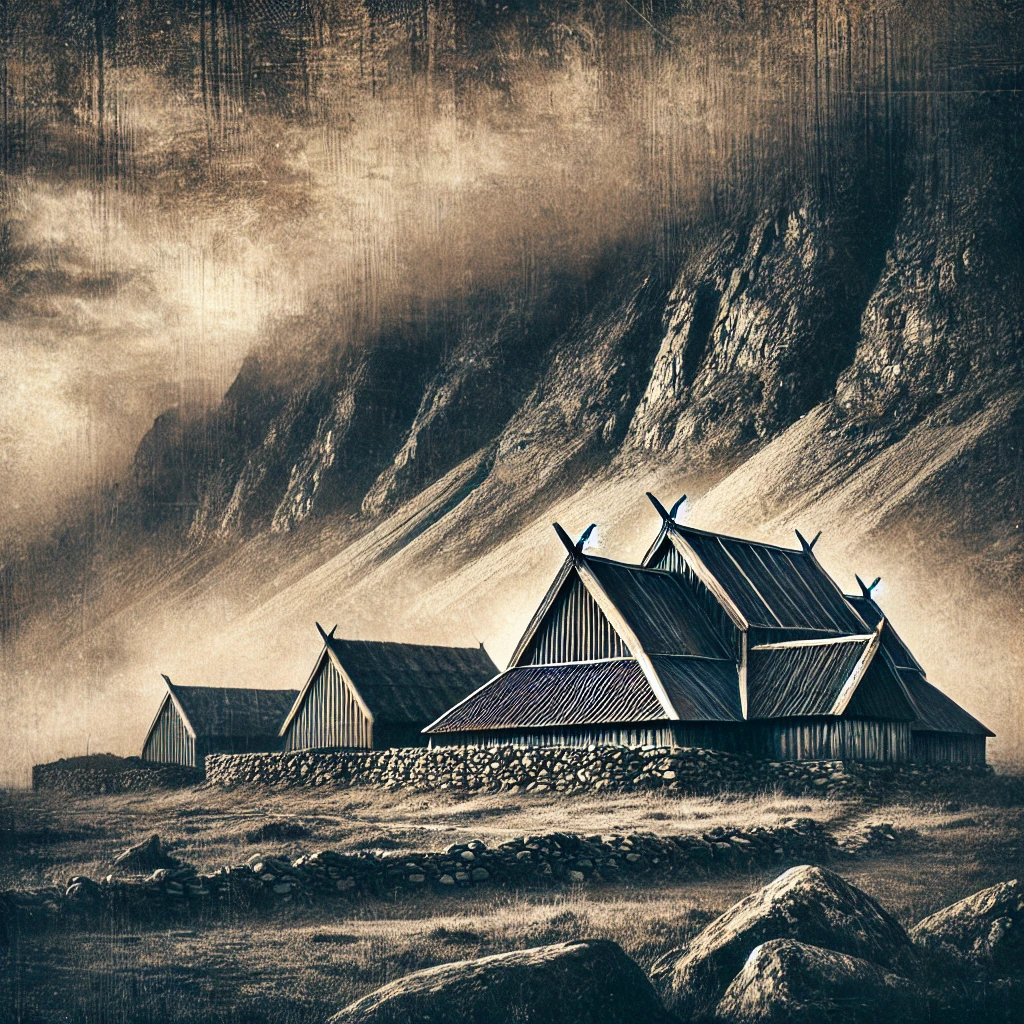Introduction to Vinland Saga

Have you ever wondered what it was like to live during the Viking era? Well, Vinland Saga brings that world to life. Originally created as a manga by the talented Makoto Yukimura, this story takes us on an intense journey through Viking history, filled with battles, exploration, and deep personal struggles. The manga was first serialized in 2005, and its rich storytelling quickly captured the hearts of readers, both in Japan and across the globe.
What makes Vinland Saga stand out is its perfect mix of historical events and gripping fiction. Set in the turbulent Viking era, the story follows Thorfinn, a young warrior who grows up with a thirst for revenge. This isn't your typical battle-heavy tale, though. While there's no shortage of action, the heart of the story lies in the moral dilemmas that the characters face. It asks tough questions: What does it mean to seek revenge? Is there ever a path to peace?
Now, let's talk about its transformation into an anime. In 2019, Vinland Saga made its way to the small screen, thanks to Wit Studio. The adaptation was a massive hit, introducing the story to a wider audience beyond manga readers. With breathtaking animation and a powerful soundtrack, the anime captured the same intensity that fans of the manga loved. Whether you're new to the story or a longtime fan, there's something undeniably captivating about watching these Viking warriors battle it out while also wrestling with their inner conflicts.
One of the most remarkable things about Vinland Saga is its growing popularity around the world. Its authentic depiction of the Viking age, combined with deep, character-driven storytelling, has helped build a strong, loyal fan base. And it’s not just historical accuracy that draws people in — the themes of revenge, redemption, and inner peace resonate with audiences of all backgrounds.
In short, Vinland Saga is more than just an action-packed series. It’s a deeply emotional journey set against the backdrop of one of the most fascinating periods in history. So, whether you're a history buff or just love a good story, this is one saga you won't want to miss.
Plot Overview and Themes of Vinland Saga

Let's dive into the heart of Vinland Saga. At its core, the story follows Thorfinn, a young Viking who embarks on a deeply personal and emotional journey. When we first meet him, Thorfinn is driven by one thing: revenge. His father, a legendary warrior named Thors, is killed by the cunning and ruthless Askeladd, and from that moment on, Thorfinn's sole purpose is to avenge his father's death. But, as you can imagine, seeking vengeance isn’t as straightforward as it seems, and that’s where things get interesting.
Thorfinn's quest for revenge takes him on a long and grueling path. He becomes part of Askeladd's band of warriors, honing his skills as a fighter, all while waiting for the chance to duel him. Yet, beneath the surface of this revenge tale, Vinland Saga is so much more. The story is layered with complex moral dilemmas. Thorfinn’s desire for revenge constantly clashes with his memories of his father, who was a man of peace. This internal conflict leads to one of the series' biggest questions: Can true peace ever be achieved through violence?
One of the most compelling aspects of Vinland Saga is how it weaves historical context into the plot. The series is set during the Viking invasions of England in the 11th century, which brings a sense of realism and depth to the narrative. The brutal realities of Viking life—endless wars, the struggle for power, and the harsh conditions—are all vividly portrayed. But at the same time, the story doesn’t shy away from exploring the more philosophical questions that arise from such a violent world.
The themes in Vinland Saga are rich and thought-provoking. Revenge is the driving force for Thorfinn, but over time, the concept of honor becomes equally important. As characters wrestle with their past actions and the lives they’ve taken, they begin to question what it really means to live with honor. Can a life defined by bloodshed and war ever lead to inner peace? These themes of honor and the search for peace run throughout the story, making it more than just an action-packed tale of Viking battles.
As the plot progresses, Thorfinn’s journey takes unexpected turns. Without giving away too many spoilers, let’s just say that his perspective on revenge, life, and peace evolves in surprising ways. Vinland Saga isn’t just about battles and conquest—it's about the choices we make, the consequences we face, and ultimately, the hope that something better awaits beyond the violence.
In the end, Vinland Saga asks us all to think about our own quests for peace and what we’re willing to sacrifice to achieve it. Thorfinn’s journey is a reflection of that struggle, and it’s this emotional depth that makes the series resonate with so many people around the world.
Character Profiles in Vinland Saga

One of the reasons Vinland Saga is so captivating is its unforgettable characters. Each one is complex, with their own motivations, struggles, and growth throughout the story. Let’s take a closer look at three key figures: Thorfinn, Askeladd, and King Canute.
First up is Thorfinn, the story's main protagonist. At the beginning of the series, Thorfinn is consumed by revenge. He wants nothing more than to kill Askeladd, the man responsible for his father's death. But what’s fascinating about Thorfinn’s character is how his desire for vengeance evolves over time. He starts off as a fierce warrior, driven purely by anger, but as the story progresses, he begins to question his own motivations. Is revenge really worth everything he's sacrificing? Thorfinn’s growth from a revenge-driven child into a man who seeks peace and redemption is one of the most compelling character arcs in the series. His inner conflict and journey of self-discovery make him someone you can’t help but root for, even when he’s making questionable decisions.
Next, we have Askeladd, who is, without a doubt, one of the most intriguing characters in Vinland Saga. At first glance, he seems like a classic villain—he’s manipulative, cunning, and ruthless. However, as you get to know him, it becomes clear that Askeladd is far more than a simple antagonist. He’s a man with his own complex motivations, shaped by a difficult past. Askeladd's loyalty isn’t to his band of warriors or even to himself—it’s to Wales, his mother’s homeland. His strategic mind and ability to manipulate those around him make him a force to be reckoned with, but it’s his unexpected moments of vulnerability that truly set him apart. His relationship with Thorfinn is equally complex—he both mentors and torments the young boy, creating a dynamic that’s as tense as it is emotional.
Finally, let’s talk about King Canute. When we first meet Canute, he’s a timid and somewhat fragile prince, seemingly unsuited for the brutal world of Vikings. However, Canute undergoes one of the most dramatic transformations in the series. After experiencing deep personal loss and grappling with his faith, he rises to power, embracing his role as a ruler with a vision for peace. What’s fascinating about Canute’s development is how he moves from being passive to becoming a decisive, and at times, cold leader. His belief in creating a peaceful and prosperous kingdom doesn’t come without sacrifice, and it’s this balance between his idealism and the harsh realities of leadership that makes his character arc so engaging. His interactions with Thorfinn and Askeladd also reveal much about his internal struggles and the weight of leadership.
In Vinland Saga, the relationships between these three characters are just as important as their individual journeys. Thorfinn’s hatred for Askeladd drives much of the early plot, but over time, their bond becomes more complicated, almost resembling a twisted mentor-student relationship. Meanwhile, Canute’s rise to power intersects with Thorfinn’s quest for peace, creating moments of tension, collaboration, and reflection.
Together, these characters and their evolving relationships create the emotional backbone of Vinland Saga. Their personal growth, motivations, and interactions offer a rich tapestry that keeps readers and viewers deeply invested in their fates.
The Historical Influence on Vinland Saga

What makes Vinland Saga stand out among other anime and manga series is its deep roots in real history. While it’s an epic tale of revenge and adventure, it also paints a vivid picture of the Viking era. This isn’t just a fantasy world—many of the events, settings, and even some characters are inspired by actual historical events from the Viking Age.
Let’s start with the Viking exploration that the series is named after. The term “Vinland” refers to the area that Vikings, led by Leif Erikson, discovered in North America around the year 1000. In Vinland Saga, this idea of exploring new lands is constantly in the background, representing both the literal expansion of Viking territories and the metaphorical search for peace and a new way of life. Leif Erikson himself is a character in the story, offering a direct link between the series and real Viking exploration. His tales of Vinland—a peaceful land far away—become a symbol of hope for some characters, including the protagonist, Thorfinn.
But Vinland Saga doesn’t shy away from depicting the darker side of Viking history, either. The battles, the pillaging, and the quest for power are shown in full force. For example, the series takes place during the Viking invasions of England in the 11th century, a period marked by brutal wars and shifting alliances. One of the historical events woven into the story is the Battle of London Bridge in 1013, where the Viking forces, led by King Sweyn Forkbeard(Canute's father), clashed with the English. These battles aren’t just about physical conflict; they’re also about the struggles for survival and dominance in a harsh world.
Now, let’s talk about the historical figures that appear in Vinland Saga. The series features several key characters who are based on real people from Viking history. King Canute, for example, was an actual figure who later became known as Canute the Great, the ruler of Denmark and England. His journey from a timid prince to a powerful and determined king mirrors the real historical rise of Canute. This adds a layer of authenticity to the story, as we watch his transformation not just as a character, but as a figure rooted in history.
Another important figure in the series is Askeladd, who is partly based on the legendary Norse hero Olaf the Peacock. While Askeladd’s story in Vinland Saga differs from the historical accounts, his cunning and leadership qualities are traits often attributed to Viking leaders in the sagas and historical texts.
The show doesn’t just focus on the famous figures—it also gives us a glimpse into Viking culture. The values of honor, loyalty, and warfare are central to the characters’ motivations and the society they live in. But Vinland Saga also highlights the conflicts within Viking society, especially the tension between their violent way of life and the desire for peace. This is reflected in characters like Thorfinn, who grows up in a world dominated by war but dreams of finding a way out of the cycle of violence.
In the end, Vinland Saga masterfully blends historical accuracy with its fictional elements, giving us a story that feels both epic and grounded. Whether you’re watching the intense battles or reflecting on the characters’ inner struggles, the series always reminds you that these events, in some form, actually happened. It’s a powerful tribute to Viking history, showing the glory and the brutality of a time long past.
Reception and Impact of Vinland Saga

So, how has Vinland Saga been received since its debut? Well, both in Japan and internationally, it’s safe to say this series has left a significant mark. What started as a manga by Makoto Yukimura has grown into a critically acclaimed anime that has captured the hearts of fans around the world.
First, let’s look at the reception in Japan. As a manga, Vinland Saga earned high praise for its unique blend of historical accuracy and emotional depth. Readers were captivated by its complex characters and the moral dilemmas they faced. The anime adaptation, which aired in 2019, brought the story to life in a new way. Thanks to Wit Studio’sstunning animation, the Viking world came alive with breathtaking battle scenes and landscapes. Fans and critics alike admired how the show stayed true to its historical roots while delivering intense and emotional storytelling. The attention to detail in the animation and the gripping character arcs helped it stand out in an already competitive anime scene.
But it wasn’t just in Japan where Vinland Saga made waves. The series quickly gained international recognition. In fact, it was praised by viewers worldwide for being more than just another action-packed anime. Many fans appreciated how it delved into deeper themes like revenge, honor, and the quest for peace. The series' international success can also be attributed to its Viking theme, which naturally resonates with audiences in regions like Europe and North America, where Viking history and mythology are part of the cultural heritage. Platforms like Amazon Prime Video helped bring the anime to a global audience, allowing fans from all corners of the world to experience the epic saga.
When it comes to critical acclaim, Vinland Saga has not disappointed. It has won several prestigious awards, including the Kodansha Manga Award for Best General Manga. Critics have consistently praised its storytelling, character development, and the unique way it blends historical events with philosophical themes. It’s rare for an anime to strike such a balance between action and introspection, but Vinland Saga manages to do so flawlessly.
Beyond its immediate success, Vinland Saga has also had a significant impact on both the anime and manga industries. Its success opened the door for more historically themed anime, showing that audiences are interested in stories that go beyond pure fantasy or sci-fi. The Viking setting, in particular, has inspired a wave of similar media, from other anime to video games, that explore this fascinating period of history. The series has proven that there’s a demand for more mature, thought-provoking content in the anime world, and it has certainly set a high bar for future projects that wish to follow in its footsteps.
Culturally, Vinland Saga has also brought attention to Viking history in a way that few other works of fiction have. It’s helped spark an interest in Viking culture, not just through its action scenes but also through its exploration of the values and struggles of that era. For many fans, the series has become a gateway to learning more about the real history behind the characters and events depicted.
In conclusion, Vinland Saga isn’t just a story about Vikings—it’s a tale that resonates on multiple levels. Whether you’re drawn to the action, the characters, or the moral questions it raises, this series has something for everyone. Its impact on the anime and manga industry, along with its cultural significance, ensures that Vinland Saga will be remembered as one of the greats.